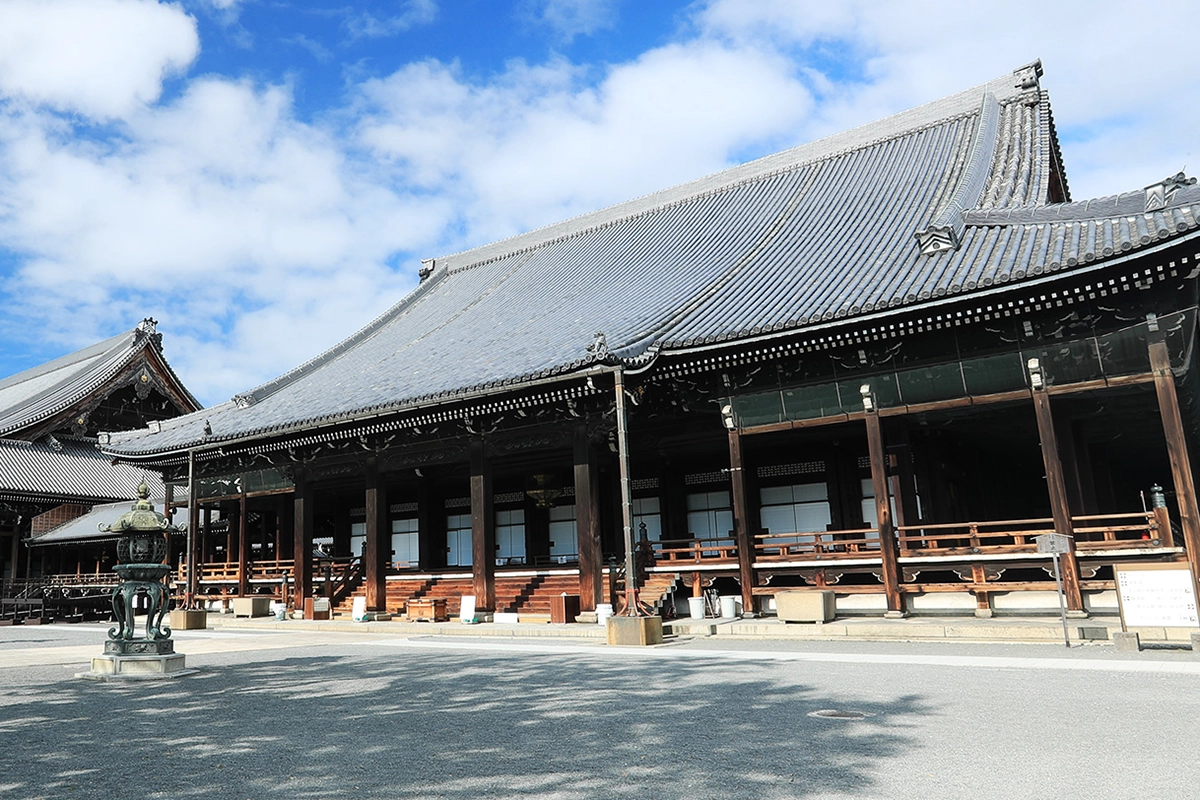Enchanting Tranquility Amidst Kyoto’s Rich Heritage: Nishi Hongan-ji
In the heart of Kyoto, where ancient traditions and modernity harmoniously coexist, lies a UNESCO World Heritage site that encapsulates the very essence of Japan’s profound cultural heritage – Nishi Hongan-ji. This historical treasure, nestled within the timeless city, offers visitors a captivating journey through time, revealing the spiritual and architectural marvels that have shaped Japan’s history.
Nishi Hongan-ji, a name that resonates with reverence and significance, stands as one of two head temples of the Jodo Shinshu sect of Buddhism. Alongside its sibling temple, Higashi Hongan-ji, they form a sacred duo that has witnessed centuries of devotion and dedication. While both temples hold their unique allure, it’s Nishi Hongan-ji that beckons explorers with its own tale of grandeur.
The temple’s origin dates back to 1591, though it endured several unfortunate incidents over the years. Rebuilt during the 17th century Edo period, Nishi Hongan-ji rose from the ashes as a testament to the enduring spirit of the Japanese people. Today, it covers a sprawling 23-hectare expanse, a labyrinth of cultural treasures, historical significance, and architectural marvels.
At the heart of Nishi Hongan-ji stands the Amidado, the main hall, an architectural masterpiece that encapsulates the essence of Japanese artistry. Ornate decorations and intricate carvings adorn the temple, a visual symphony of craftsmanship. The Amidado is a testament to the unwavering dedication of artisans who labored to create a sanctuary of spiritual serenity and visual splendor. As you stand in its presence, you can’t help but be awe-inspired by the intricate details that grace every corner, a reminder of the profound spiritual connection that has bound generations together.
Beyond the captivating aesthetics, Nishi Hongan-ji has woven itself into the very fabric of Japan’s history. During the Edo period, this temple bore witness to the footprints of samurai, emperors, and other influential historical figures. It was closely associated with the Tokugawa shogunate, playing a pivotal role in the socio-political landscape of the time. As you walk through the temple’s hallowed grounds, you’re not just a tourist, but a time traveler, immersed in the echoes of a bygone era.
While Nishi Hongan-ji stands as a majestic testament to Japanese culture and history, just a stone’s throw away, its sibling, Higashi Hongan-ji, graces the city with its presence. Another UNESCO World Heritage site, Higashi Hongan-ji is a monumental masterpiece in its own right. The temple, like Nishi Hongan-ji, was also constructed during the 17th century, a period where Japan’s architectural prowess reached its zenith.
What sets Higashi Hongan-ji apart is its awe-inspiring size. The main hall dwarfs its counterpart at Nishi Hongan-ji, and its ornate carvings and decorations create an enchanting tableau of visual grandeur. As you step into its sprawling precincts, you are greeted by an opulent display of Japanese art and spirituality. The grandeur of Higashi Hongan-ji is a testament to the indomitable spirit of the artisans who crafted it and the devotion of those who have maintained it over the centuries.
As you explore Nishi Hongan-ji and its neighboring sibling, Higashi Hongan-ji, you’ll find yourself traversing a rich tapestry of Japanese history and culture. The two temples, though distinct in their charm, share a common thread of spiritual significance and architectural brilliance. Together, they beckon you to immerse yourself in the timeless traditions and artistic mastery that define Kyoto’s heritage.
In the heart of Kyoto, Nishi Hongan-ji is not just a temple; it is a sanctuary of peace and contemplation, a living testament to Japan’s cultural and historical legacy. It invites you to wander through its ornate halls and gardens, to listen to the whispers of the past, and to experience the tranquility that has been nurtured over centuries.
